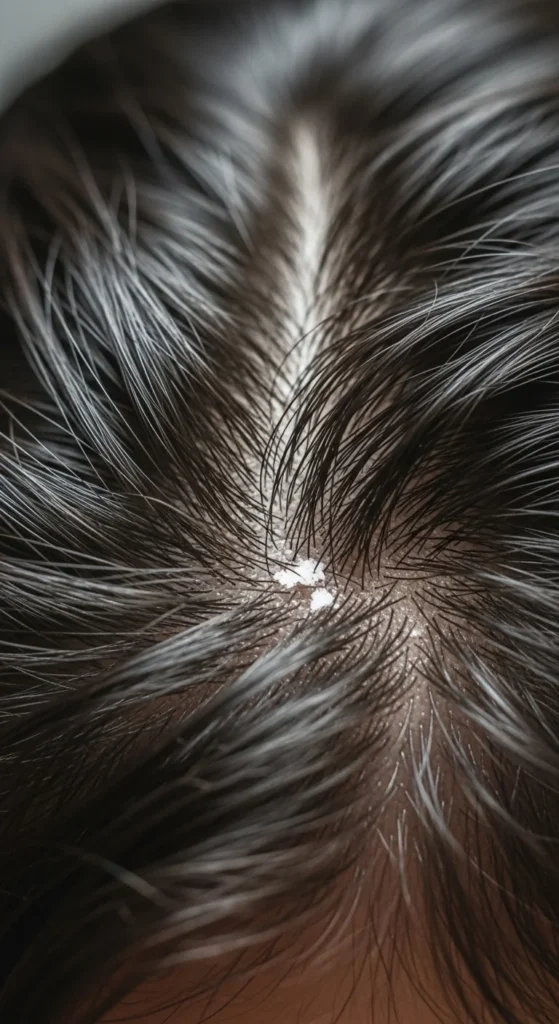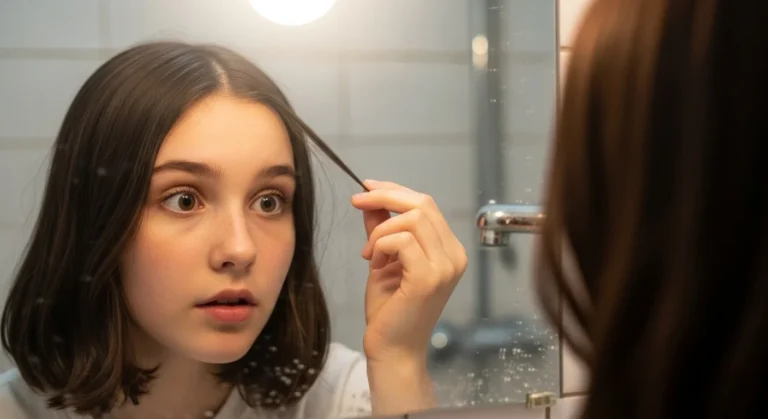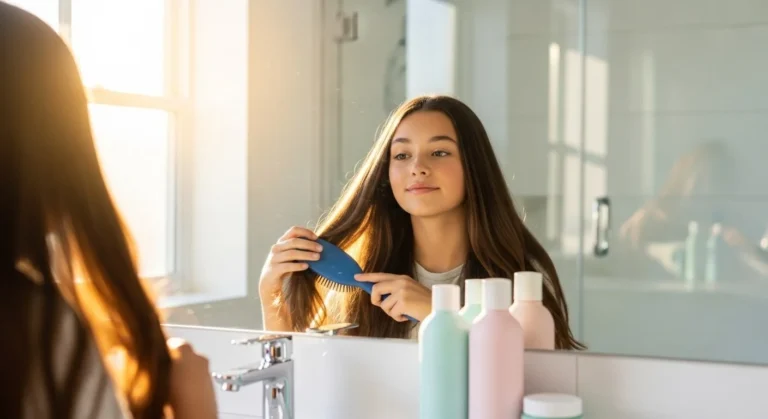Ways Puberty Increases Dandruff in Teens (and How to Fix It)
Puberty can be awkward mood swings, acne, voice cracks, and yes, flaky dandruff. If you’ve noticed tiny white flakes on your shoulders or an itchy scalp since hitting your teen years, you’re definitely not alone.
The truth is, puberty can make dandruff worse because your hormones are changing fast, affecting how much oil your scalp produces. But the good news? With the right care, you can control it easily.
Let’s break down why dandruff often appears during puberty and what simple steps you can take to manage it.
1. Hormonal Changes Lead to More Oil Production
When puberty starts, your body begins producing more androgens — hormones that increase oil (sebum) production in your skin and scalp. While that oil keeps your scalp moisturized, too much can create the perfect environment for Malassezia, a natural yeast that feeds on oils.
This yeast isn’t harmful, but when it grows too fast, it irritates the scalp, causing itchiness and flakes.
You might notice:
- Greasy roots even a day after washing
- White or yellowish flakes on your scalp or clothes
- A mild itch, especially behind your ears or near the hairline

💡 Quick fix: Try using a mild anti-dandruff shampoo twice a week with ingredients like zinc pyrithione or ketoconazole. On other days, use a gentle, sulfate-free cleanser to prevent dryness.
2. Sweat and Dirt Can Worsen Dandruff
Teens are active sports, school, outdoor fun, and late nights all mean more sweat and grime on your scalp. When sweat mixes with oil and dead skin, it clogs pores and traps bacteria, which can lead to irritation and flakes.
If you notice dandruff after workouts or hot weather, it’s probably sweat-related buildup.
How to fix it:
- Rinse your hair after intense workouts.
- Don’t wear sweaty caps or helmets for long periods.
- Let your scalp breathe avoid tight hairstyles all day.

💡 Pro tip: Keep dry shampoo or scalp wipes in your gym bag. They help absorb oil and keep your scalp fresh until your next wash.
3. Skipping Regular Hair Washes Causes Buildup
During puberty, your scalp’s oil glands work overtime. Skipping too many washes lets sebum, sweat, and dead skin collect on your scalp. That buildup feeds dandruff-causing yeast and makes flakes more visible.
If your hair looks flat or sticky, or if your scalp itches by day two, you probably need to wash more often.
Tips for a clean scalp:
- Wash every 2–3 days if your hair is oily.
- Massage shampoo into your scalp for 30 seconds focus on the roots.
- Always rinse thoroughly so no residue stays behind.
💡 Bonus tip: Rinse your hair with cool water instead of hot it helps keep your scalp calm and reduces oil overproduction.
4. Hair Products Can Trigger Dandruff Too
Many teens experiment with hair gels, sprays, or styling creams but some of these products contain alcohol or silicone, which can dry out or irritate your scalp.
That irritation leads to itchy, flaky patches that look like dandruff. On top of that, heavy products can clog pores and attract more oil and dirt.
To avoid product-related dandruff:
- Pick light, non-greasy formulas labeled “non-comedogenic.”
- Avoid using too many products at once.
- Deep clean your scalp once a week with a clarifying shampoo.

💡 DIY scalp rinse: Mix 1 tablespoon of apple cider vinegar with 1 cup of water. Pour it over your scalp after shampooing, leave for a minute, and rinse it helps balance oil and calm irritation.
5. Stress and Sleep Affect Your Scalp Health
Yes stress can show up on your scalp! During puberty, school pressure, social life, and lack of sleep can trigger hormone spikes that increase oil production and inflammation. This can make dandruff worse.
When you’re stressed or sleep-deprived, your scalp produces more sebum and sheds skin cells faster. The result? Flakes and itchiness.
To keep stress-related dandruff under control:
- Aim for 7–9 hours of sleep each night.
- Do relaxing activities like journaling, reading, or stretching.
- Keep your diet balanced include zinc, vitamin B, and omega-3-rich foods (like salmon and nuts).
💡 Pro tip: Hydration helps too! Drinking enough water daily keeps your scalp and skin balanced.
Simple Everyday Habits to Keep Dandruff Away
Keeping dandruff under control doesn’t need to be complicated. Try building these habits into your routine:
- Wash your pillowcase twice a week.
- Clean your hairbrushes regularly.
- Avoid scratching your scalp it worsens irritation.
- Keep your nails short to prevent damage if you do scratch.
- Use a satin or silk pillowcase to reduce friction on your scalp.
Final Takeaway
So, does puberty increase dandruff in teens? Yes but it’s totally manageable.
Your scalp reacts to hormonal changes, sweat, and lifestyle shifts, but a good washing routine, gentle products, and a little self-care go a long way.
Dandruff doesn’t mean you’re doing something wrong it just means your scalp is adjusting to new hormones. Stay consistent with your routine, eat well, sleep enough, and those pesky flakes will start to fade.
✨ Save this guide for later or share it with a friend who’s struggling with teen dandruff because everyone deserves healthy, confident hair!







